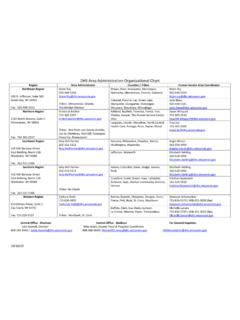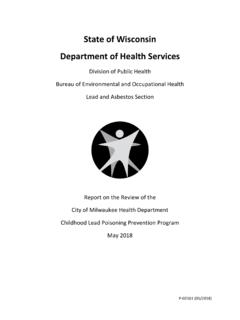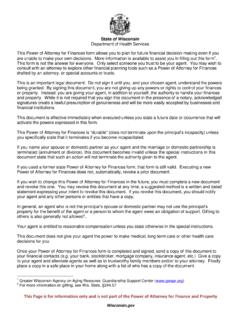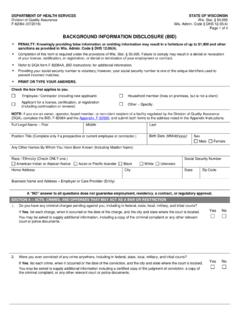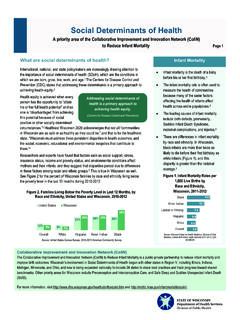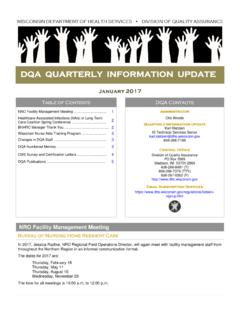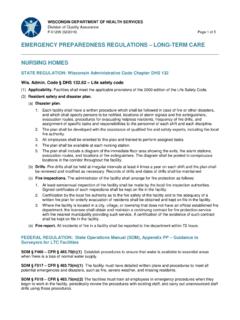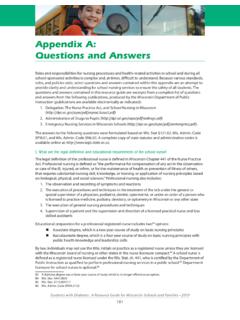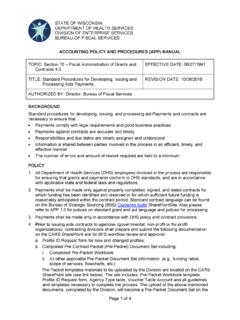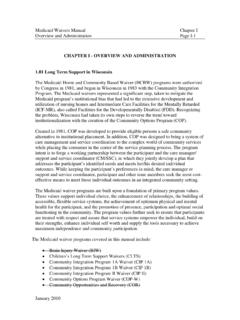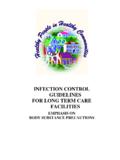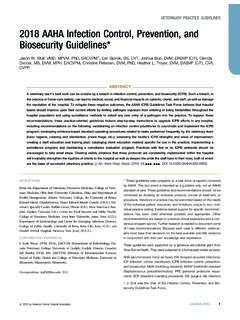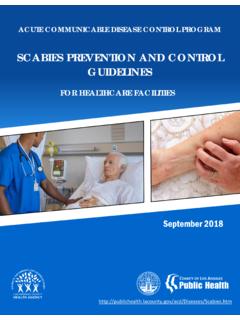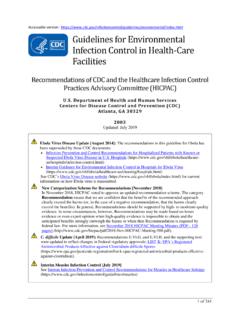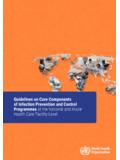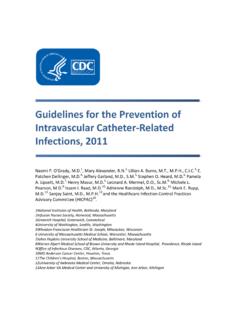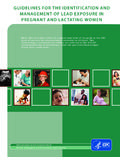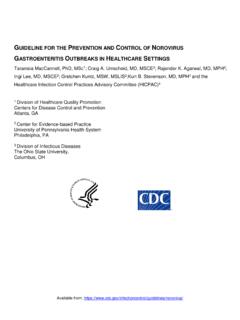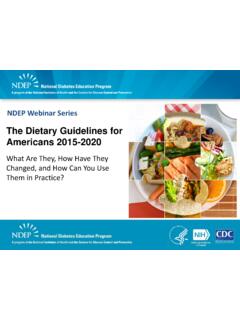Transcription of Guidelines for Investigation of COVID-19 Outbreaks in Schools
1 Guidelines for the prevention , Investigation , and control of COVID-19 Outbreaks in K-12 Schools in wisconsin Division of Public Health P- 02757 (02/2022) Table of Contents Introduction, Purpose, and Scope .. 1 Outbreak prevention Strategies .. 2 COVID-19 Vaccination .. 2 Face Masks .. 4 Physical Distancing and Cohorting .. 5 Screening Testing of Students and Staff .. 5 Staying Home When Sick and Getting Tested .. 7 Ventilation .. 8 Hand Hygiene and Respiratory Etiquette .. 9 Cleaning and Disinfection .. 10 Signage and Communication .. 10 Detecting Cases and Outbreaks in Schools (K-12) .. 10 Outbreak Investigation and Mitigation: An Overview .. 10 Outbreak Definitions and Roles.
2 11 Outbreak Investigations in Schools .. 13 Make a Line List .. 13 Case and Contact Interviews .. 13 Goals of the Case Interview .. 15 Goals of the Contact Interview .. 16 Identifying Close Contacts .. 16 Exceptions for School-based Health care Professionals .. 17 Special Considerations for Identifying Close Contacts .. 18 Public Health Follow Up .. 19 Contact Tracing Roles and Responsibilities .. 19 Notification of Families and Staff .. 20 Case and Outbreak Mitigation Measures .. 21 Exclusion from In-person Instruction .. 21 Isolation and Quarantine .. 23 Enhanced Cleaning and Disinfection .. 31 Screening Testing in Response to a Case or an Outbreak .. 31 References .. 33 Resources .. 34 Public Health Investigation Checklist.
3 36 COVID-19 : When a student, or faculty/staff member can return to school or child care .. 37 Illness Log/Line List .. 40 Template Letter to Parents/Guardians: COVID-19 Case(s) in the School .. 41 Template Letter to Parents/Guardians: Close Contact to a COVID-19 Case in the School .. 43 Template Letter: Sending sick child home .. 45 Template Press Release: Keeping Schools Safe against Outbreak .. 47 Template Press Release: Releasing Information about Outbreak/ Investigation at Local 49 Health Screening Checklist .. 51 COVID-19 Health Screening FAQ and At-Home COVID-19 Health Screening Instructions for Parents and Guardians .. 52 1 Introduction, Purpose, and Scope COVID-19 is an illness caused by a type of coronavirus called Severe Acute Respiratory Syndrome Coronavirus 2 or SARS-CoV-2 (1).
4 Symptoms of COVID-19 may include fever or chills, cough, shortness of breath or difficulty breathing, fatigue, muscle or body aches, headache, new loss of taste or smell, sore throat, congestion or runny nose, nausea or vomiting, or diarrhea (2). Severe symptoms may include trouble breathing; persistent pain or pressure in the chest; new confusion; inability to wake or stay awake; or pale, gray or blue-colored skin, lips or nail beds, depending on skin tone. COVID-19 is easily transmitted from person to person in close contact through the respiratory droplets and aerosol particles released by infected persons during coughing, sneezing, singing, talking, and breathing. Compared with adults, children and adolescents infected with SARS-CoV-2 are more likely to be asymptomatic or have mild, non-specific symptoms like headache or sore throat (3, 4).
5 They are also less likely to develop severe illness or die of COVID-19 , however the degree to which children will suffer long-term effects of the disease is still unknown (5). Despite underreporting during the early months of the pandemic, we now recognize that children are probably infected at similar rates to, and have comparable transmission rates with, adults (6, 7). Aside from the detrimental impact on the physical health of children and adolescents, the COVID-19 pandemic has taken a toll on the educational, mental, and emotional well-being of school-aged children (8, 9). In addition to the academic benefits of classroom instruction, Schools offer access to school lunch and special education programs, school-based health services, a wide range of extra-curricular opportunities, and the ability for parents and caregivers to continue working (10 - 12).
6 For these reasons, maintaining in-person instruction for school-aged children and adolescents is a priority. Reports of Outbreaks among youth at camps, sporting events, and Schools emphasize the risks of gathering school-aged children together while COVID-19 is still circulating (13 - 15). However, these risks, as a recent CDC review points out, are reduced when multiple prevention strategies such as masking, physical distancing, and cohorting, are consistently and correctly implemented. Therefore, the latest CDC guidance recommends that Schools use multiple prevention strategies, especially in areas with moderate to high community transmission and/or low vaccination rates to control transmission and allow Schools to stay open.
7 We urge all Schools and school districts to follow this guidance and recommendations to ensure the health and safety of students, teachers, and school staff, as well as the broader community. Local and Tribal Health Departments (LTHDs) should use this guidance as they work with school administrators to develop the safest approach to maintain in-person instruction during the school year. In addition, we provide information on how to investigate and control cases and Outbreaks of COVID-19 in Schools (grades K-12). Our recommendations align with the CDC s Guidance for COVID-19 prevention in K-12 Schools that provides a framework for Schools to remain open for in-person instruction. 2 The wisconsin Department of Health Services (DHS) developed these recommendations with input from multiple sources, including the wisconsin Department of Public Instruction (DPI), review of available literature, and guidance from the Centers for Disease control and prevention (CDC).
8 Outbreak prevention Strategies The CDC recommends that Schools layer multiple prevention strategies to protect students, teachers, administrators, and staff, and slow the spread of COVID-19 . Localities should monitor community transmission, vaccination coverage, screening testing, health system capacity, and occurrence of Outbreaks to guide decisions on the number and type of layered prevention strategies to implement in their school. School administrators should also take into account teachers and staff that are at higher risk for severe illness who cannot be vaccinated or may not be fully protected through vaccination. Additional prevention measures, such as modification of job responsibilities, should be implemented in these cases.
9 Recommended prevention strategies are detailed below and include: COVID-19 vaccination Face masks/coverings Physical distancing and cohorting Screening testing of students and staff Staying home when sick and getting tested Ventilation Hand hygiene and respiratory etiquette Cleaning and disinfection Signage and communication COVID-19 Vaccination Of all COVID-19 prevention strategies, vaccination is the leading strategy to prevent cases and eventually stop the spread. A number of FDA-approved COVID-19 vaccines are now available, and have demonstrated efficacy at reducing infections, hospitalizations, and deaths from COVID-19 . People are considered up to date on recommended COVID-19 vaccinations if they have received all of the doses for which they are eligible AND it has been at least 14 days since their final dose of a primary series or an additional dose for immunocompromised persons, or immediately after administration of a booster dose.
10 People who are up-to -date on recommended COVID-19 vaccinations are less likely to have a SARS-CoV-2 infection or transmit COVID-19 to others than people who are not up to date on recommended COVID-19 vaccinations. These recommendations are not exhaustive. School-level assessment should be made by LTHDs in consultation with school administration, DPI, and epidemiologists at DHS. Intervention and control measures should be based on the most recent guidance available from local, state, and federal public health and regulatory authorities. 3 To learn more about vaccine safety and efficacy, vaccination eligibility, and vaccination sites, refer to the CDC or DHS websites. Recommendations All eligible students, teachers, and staff should get vaccinated and boosted against COVID-19 to protect themselves and others in the school and community.
